On June 24, Landmarks hosted a virtual panel discussion on the challenges and successes of engineering Nancy Rubin’s Monochrome for Austin. The panel included Nancy Rubins; Structural Engineer Jaime Garza; Cockrell School of Engineering Dean Sharon L. Wood; Landmarks director and founder Andrée Bober; and was moderated by Cockrell School of Engineering Assistant Professor, Tricia Clayton. Among the online viewers for the talk were a group of students from LEAP (Center for Law, Engagement, and Politics), a program at Sam Houston State University. LEAP students provided a terrific recap of the conversation which is shared below:
Artistic Landmarks: Nancy Rubins' "Monochrome"
By Quinn Kobrin
Whenever the LEAP Center heads to Austin, which is often, we do our best to visit the wonderful “Landmarks” art installations on UT’s campus. Among the most astounding pieces of art is Nancy Rubins’ “Monochrome.” Whenever students see it for the first time, they step away from it–not only to get a better look, but also for fear that it might fall on them.

But between the creative vision Nancy Rubins and engineer Jaime Garza, this sculpture is not going to fall.
The story behind the art and the engineering was presented by Landmarks yesterday, and it involved quite a panel: Andree Bober (Director of Landmarks), Professor Tricia Clayton (Cockrell School of Engineering), and Jaime Garza (the project Engineer), and Dean Sharon Wood (Cockrell School of Engineering.
Rubins began by describing how she modeled the art work…

…beginning with the structure and moving into a full-blown study…
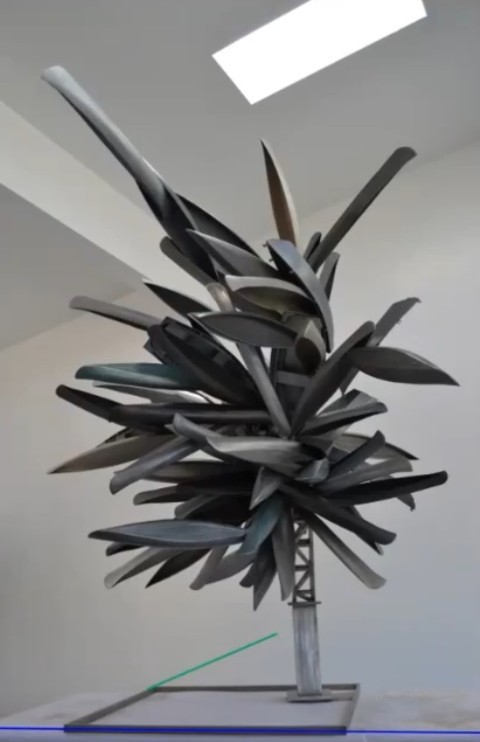
..to what it is today, “at the crossroads of the University’s science and humanities” parts of the campus.
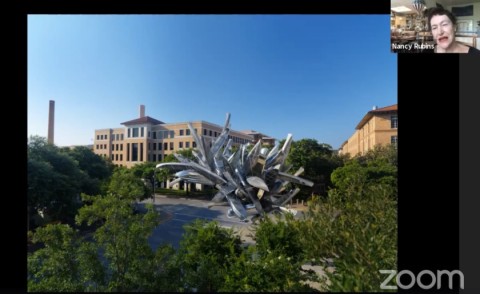
Rubins began incorporating boats into her work in 2006, after seeing her husband work on her canoe. She was drawn to the canoes’ surface, as well as its combination of figurative and abstract elements. This attraction was deepened by the different look that the canoes manifest in the rain, in the light, and other changing atmospheric conditions.
After Rubins’ discussed her artistic vision, Professor Clayton prompted Garza to describe the technical challenges associated with such a sculpture. These challenges did, indeed, become rather technical…
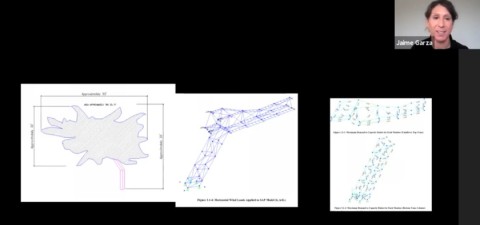
In this case, Nancy came up with the original model, which Garza then analyzed, making suggestions as to what would work best from an engineering perspective. The diagram on the right indicates the stress points of the sculpture, with the blue and green colors representing “low stress.”
Rubins wanted the sculpture to be applicable to “anywhere in the world.” What that means in practical terms is that it needs to hold up under any conditions: snow, rain, earthquakes, heat, and hurricanes. So Garza imagined “worst-case scenarios” for different parts of the world, ensured that the sculpture could survive those (with a lightning rod installed, also), and then also ensured that the sculpture could also meet the building codes of Austin.
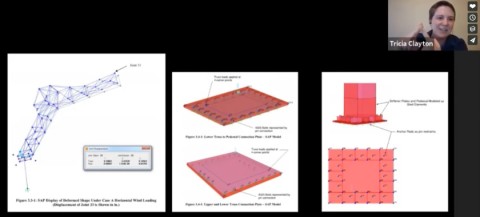
Interestingly, the sculpture goes more than 30 feet into the ground, which, obviously, helps stabilize the sprawling sculpture.
In this particular sculpture, Garza needed to demonstrate that the sculpture was sound, so rather than doing load testing (which would have taken too long), they did “finite element models” to demonstrate the structural integrity.
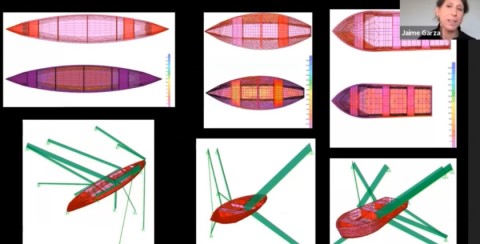
In the end, the structure is sound, as this photo (my favorite!), attests…
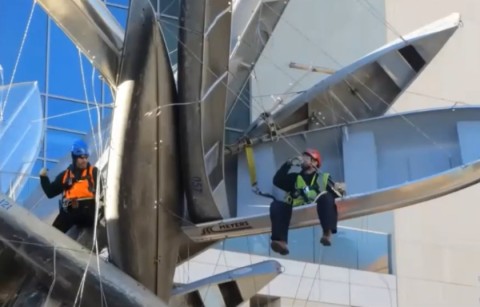
…and these young folks seem to have confidence in it.
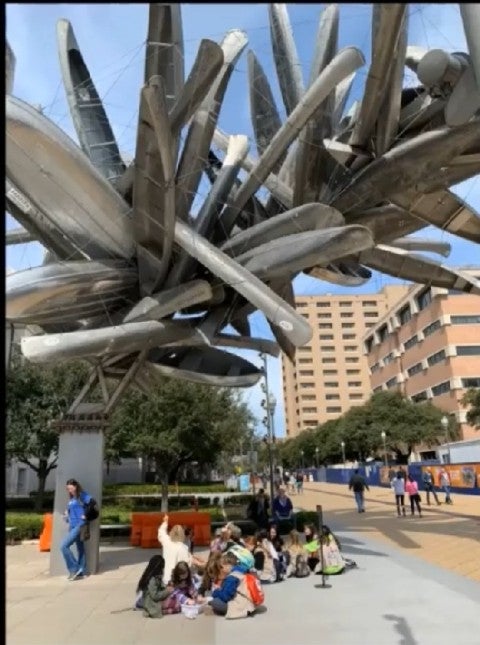
In closing, Rubins noted that her “team is super proud of the quality and safety of the work.” And after five years, there “have not been any issues” (although she knocked on wood as she said that…), and she predicted that it would last at least 40 years. We hope so.
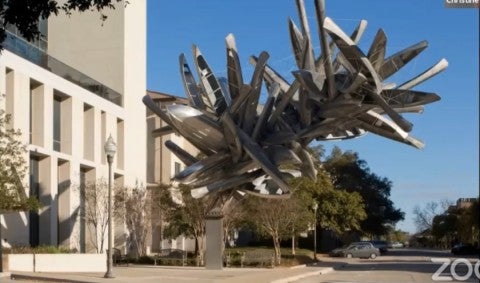
Landmarks appreciates this thoughtful recap from the LEAP group and we invite you to learn more about their program on their website and Facebook page. And if you missed the talk, you can access a recording on Landmarks Vimeo page.
Many thanks to our panelists making this lecture possible!
